Koraput Tourism offers a unique travel experience in Odisha, India, filled with tribal culture, stunning landscapes, and historical sites. Let SIXT.VN be your guide to unlocking the best of this hidden gem, offering convenient travel solutions for an unforgettable journey. Explore the untouched beauty of Koraput with seamless services that cater to your travel needs, including reliable transportation options and expert travel advice.
1. Discovering Koraput: An Overview
Koraput, nestled in the verdant valleys of Odisha, India, presents an enchanting blend of natural beauty and rich tribal heritage. Established on April 1, 1936, this district is adorned with dense forests, cascading waterfalls, terraced valleys, and sparkling springs, making it a haven for nature enthusiasts and cultural explorers. Geographically, Koraput is located between 17.4 to 20.7 degrees north latitude and 81.24 to 84.2 degrees east longitude, bordered by Rayagada to the east, Bastar District of Chhattisgarh to the west, and Nabarangpur District to the south.
The district’s history is marked by the rule of several dynasties, including the Satavahanas, Ikshvakus, Nalas, Ganga kings, and Surya vans. In ancient times, the Nalas ruled from Pushkari, near modern Umarkote. During the medieval period, Nandapur flourished as the capital under the Silavamsi kings, followed by the kings of the solar dynasty. Viravikrama Deo of the solar dynasty moved the capital to Jeypore in the mid-17th century, transforming it into a prosperous town. According to historical records, Koraput was part of the Madras Presidency before becoming a district of Odisha on April 1, 1936. In October 1992, the district was divided, leading to the creation of Malkangiri, Rayagada, and Nabarangpur alongside the present-day Koraput.
2. What Are the Top Tourist Places to Visit in Koraput?
Koraput boasts a diverse range of attractions that cater to various interests, from cultural museums to breathtaking natural landscapes. Here are some must-visit places:
2.1 Tribal Museum
The Tribal Museum, established in 1992, is a cultural treasure trove that offers an authentic glimpse into the tribal culture of Odisha. The museum showcases a diverse collection of artifacts, including tools, costumes, hand-woven clothes, and musical instruments, educating visitors about the unique heritage of the local tribes. This museum holds great importance because of its authentic display of the tribal culture of Odisha, providing a glimpse into their largely unexplored lives.
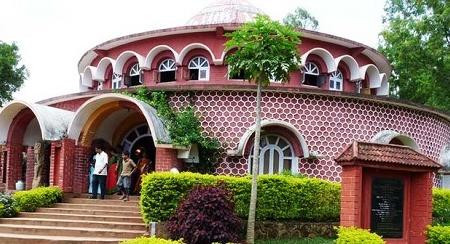 Tribal Museum Koraput
Tribal Museum Koraput
2.2 Raja Cave & Balmiki Ashram (Kapat Parbat)
Raja Cave & Balmiki Ashram, also known as Kapat Parbat, is believed to be the ancestral home of the sage Balmiki. Situated on the banks of the Machakund River, which forms the border between Odisha and Andhra Pradesh, this scenic spot is perfect for trekking and exploring eco-tourism. The main festival celebrated here is Akhayaturtiya.
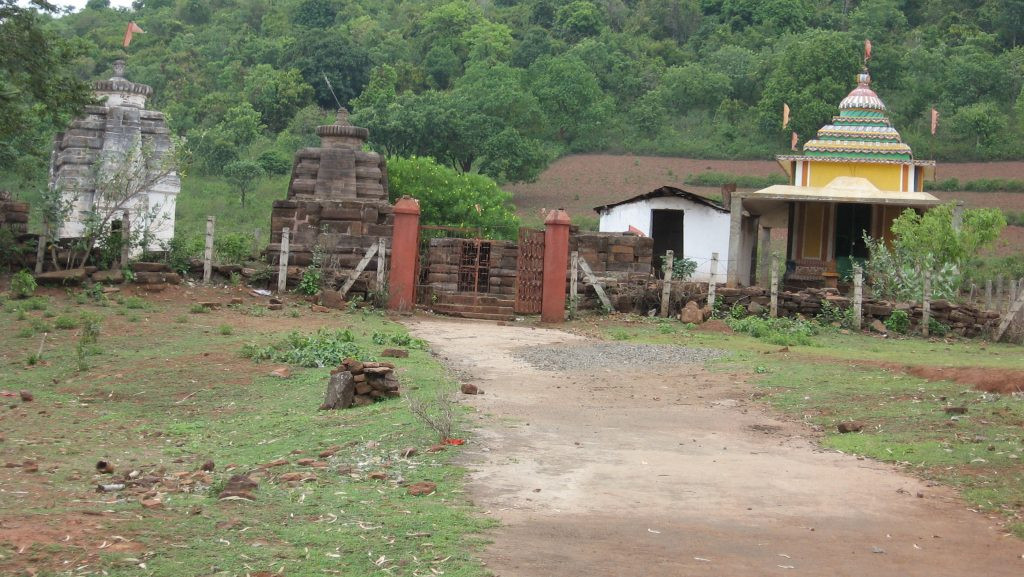 Raja Cave & Balmiki Ashram
Raja Cave & Balmiki Ashram
2.3 Parab: A Celebration of Tribal Culture
Parab is an annual tribal festival organized by the District Council of Culture, Koraput, and is a major cultural event in the state. Held in November, the festival features sports, cultural events, seminars, mountain trekking, boat races, and artists’ camps. Artists from across the country perform on a single platform, accompanied by crafts fairs and exhibitions.
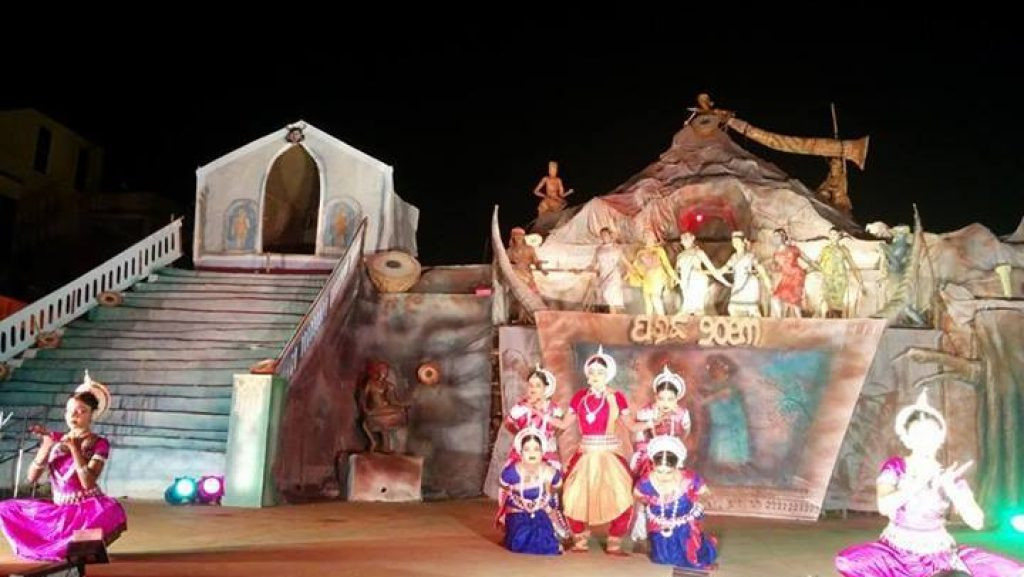 Parab
Parab
2.4 Onukadelli: A Glimpse into Bonda Tribe Life
Onukadelli is famous for its weekly market held every Thursday, where members of the Bonda tribe come from remote forests to trade. This market offers a unique opportunity to witness the culture and traditions of one of Odisha’s most ancient tribes.
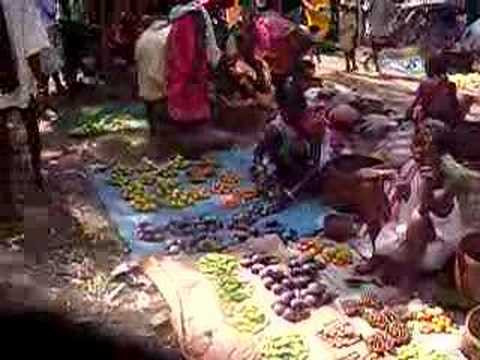 Onukadelli
Onukadelli
2.5 Nandapur: The Ancient Capital
Nandapur, the former capital of the Jeypore Kingdom, is renowned for the Batrisa Sinhasana, a well-preserved 32-step relic associated with the throne of Vikramaditya. Other attractions include a six-foot red Ganesha image and the Bhairavnath shrine.
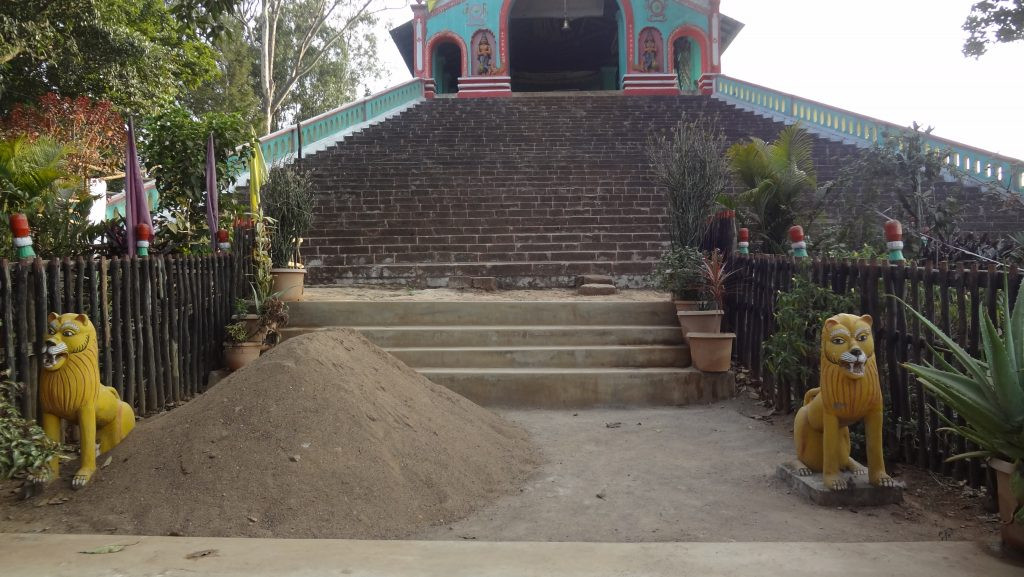 Nandapur Koraput
Nandapur Koraput
2.6 Subai: Relics of Jainism
Subai, a roadside village located 16 km from Sunabeda, features relics of a Jain monastery. The site contains rare images of the Tirthankaras, offering insights into the region’s Jain heritage.
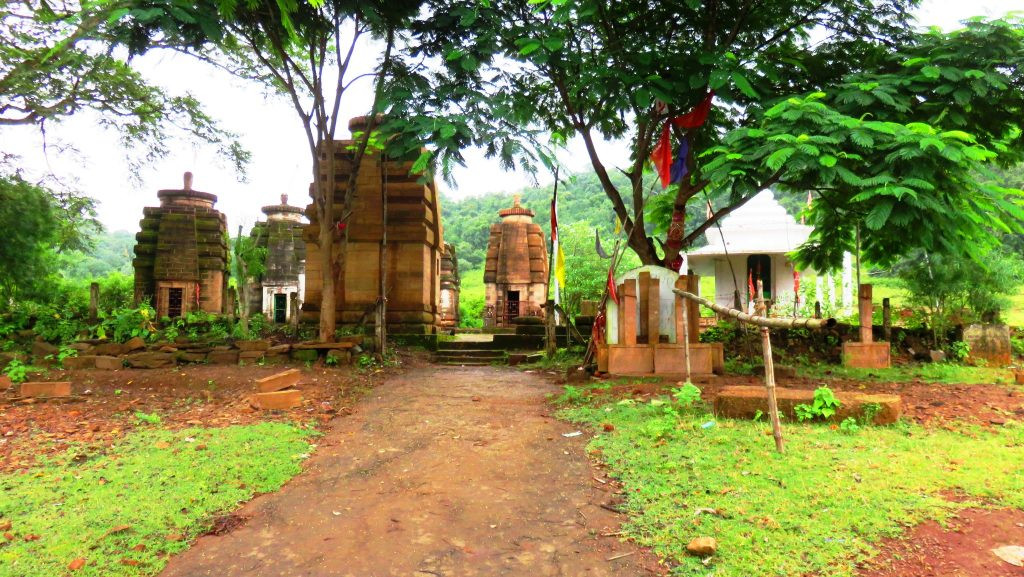 Subai
Subai
2.7 Jeypore: The City of Victory
Jeypore, the largest town in Koraput, is steeped in history and home to the royal family. The old fort is surrounded by a high masonry wall with an imposing gateway. Jagannath Sagar, a large tank in the eastern part of the town, is popular for water sports.
 Jeypore
Jeypore
2.8 Kanta Baunsuni Damanjodi: Industrial and Spiritual Hub
Damanjodi is known for its bauxite mines in the Panchapatmali hills and the presence of NALCO, Asia’s largest alumina complex. Nearby is the highest peak of Odisha and the world’s second tallest Hanuman statue, standing at 108.9 feet (33.1 meters).
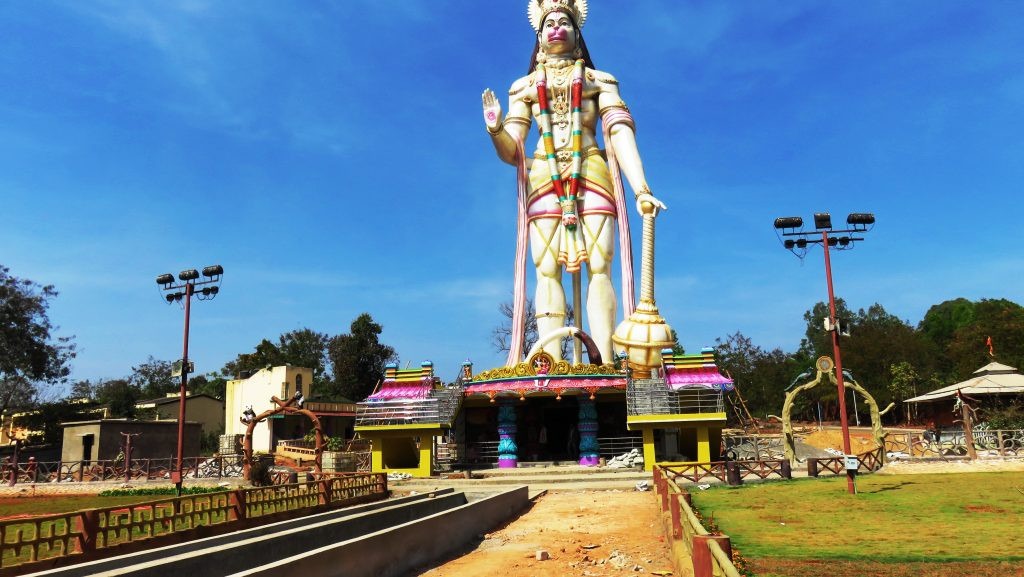 Kanta Baunsuni Damanjodi
Kanta Baunsuni Damanjodi
2.9 Dumuriput: Home to the Kneeling Hanuman Statue
Dumuriput, located between Koraput and Sunabeda, is famous for the Sri Ram Temple, which houses the highest kneeling Hanuman statue in Odisha. The Ram Navami festival is a major annual celebration, attracting numerous devotees.
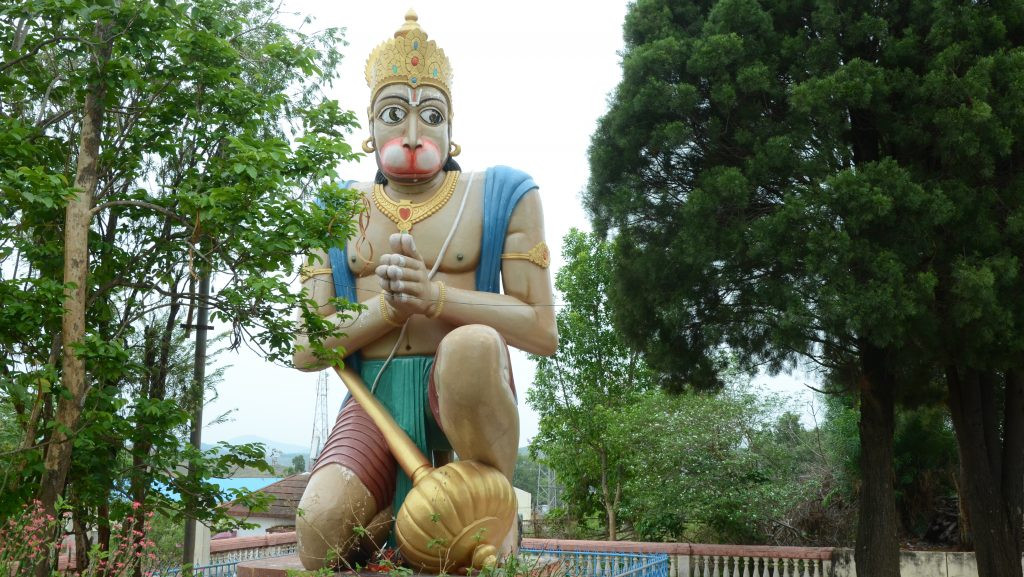 Dumuriput
Dumuriput
2.10 Kolab Dam: Scenic Beauty and Hydropower
The Kolab Dam, situated at an altitude of about 3000 ft above sea level on the Kolab River, generates hydroelectric power. The Kolab Reservoir is admired for its scenic beauty, making it a popular spot for weekend picnics and boating.
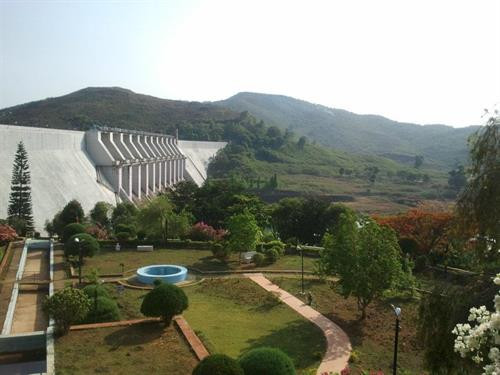 kolab Dam
kolab Dam
2.11 Jalaput: Idyllic Reservoir
Jalaput is a dam reservoir over the Kolab River, covering an area of 68.2 sq km. It is an idyllic place for picnics and pleasure trips, located 77 km from Koraput.
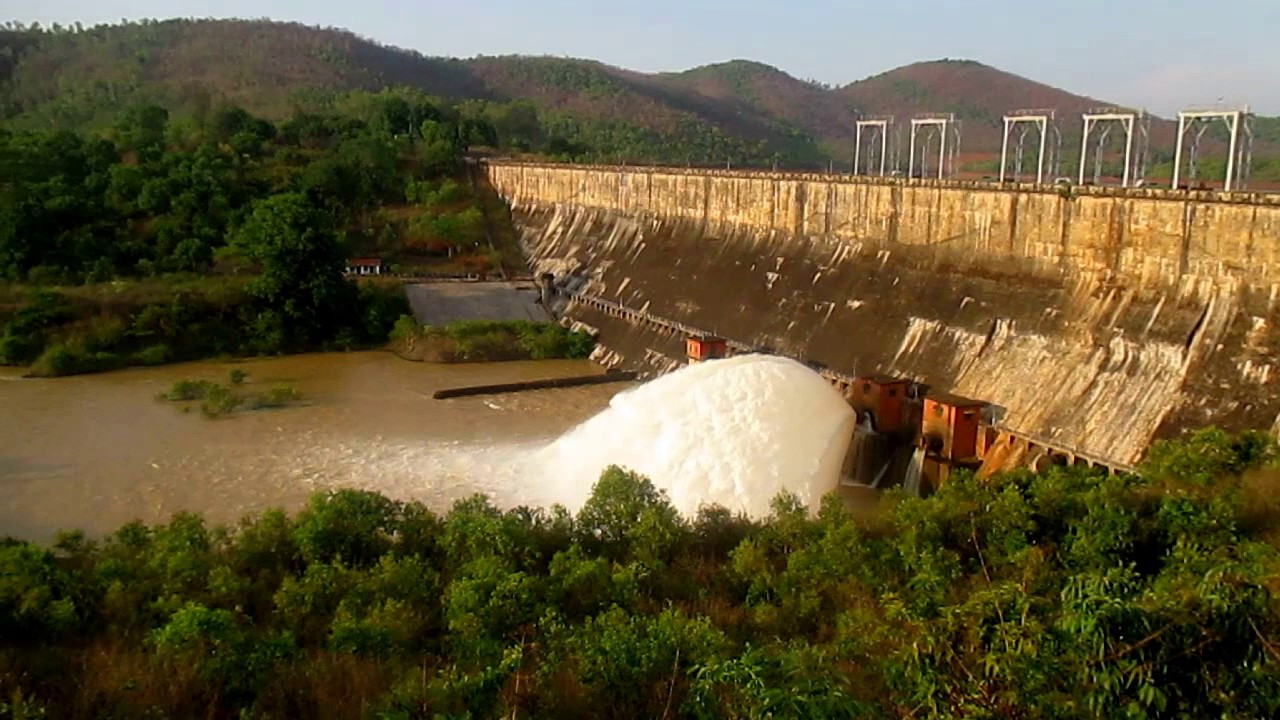 Jalaput
Jalaput
2.12 Sunabeda: Modern Township and Aircraft History
Sunabeda is a modern township known for its MIG fighter plane factory and museum, which displays aircraft engines. It’s a worthy visit for those interested in aviation history.
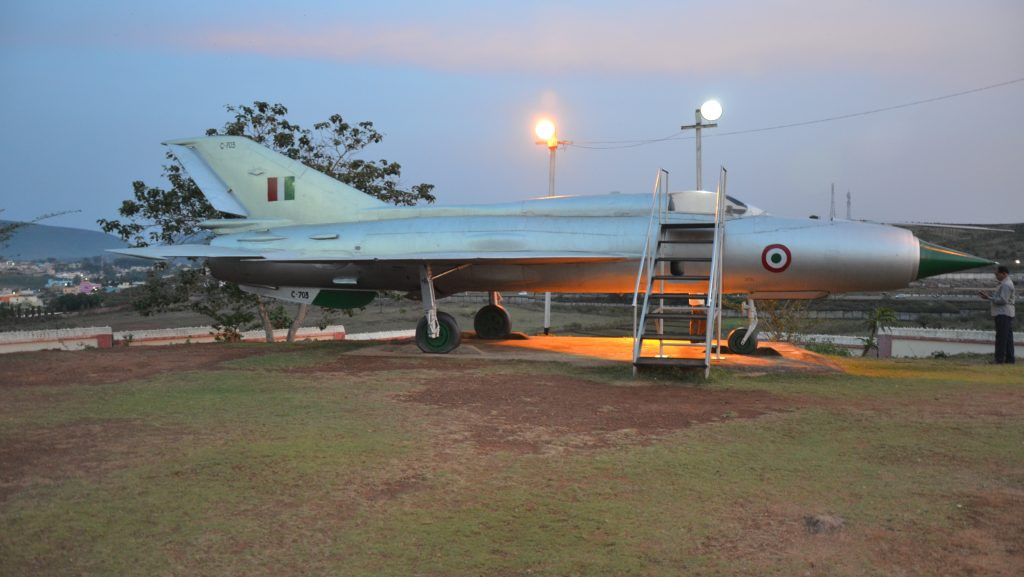 Sunabeda
Sunabeda
2.13 Gulmi: Whirlpool Attraction
The Kolab River forms a whirlpool at Gulmi, attracting large crowds from both Odisha and Chhattisgarh. It’s a natural spot of interest for tourists and locals alike.
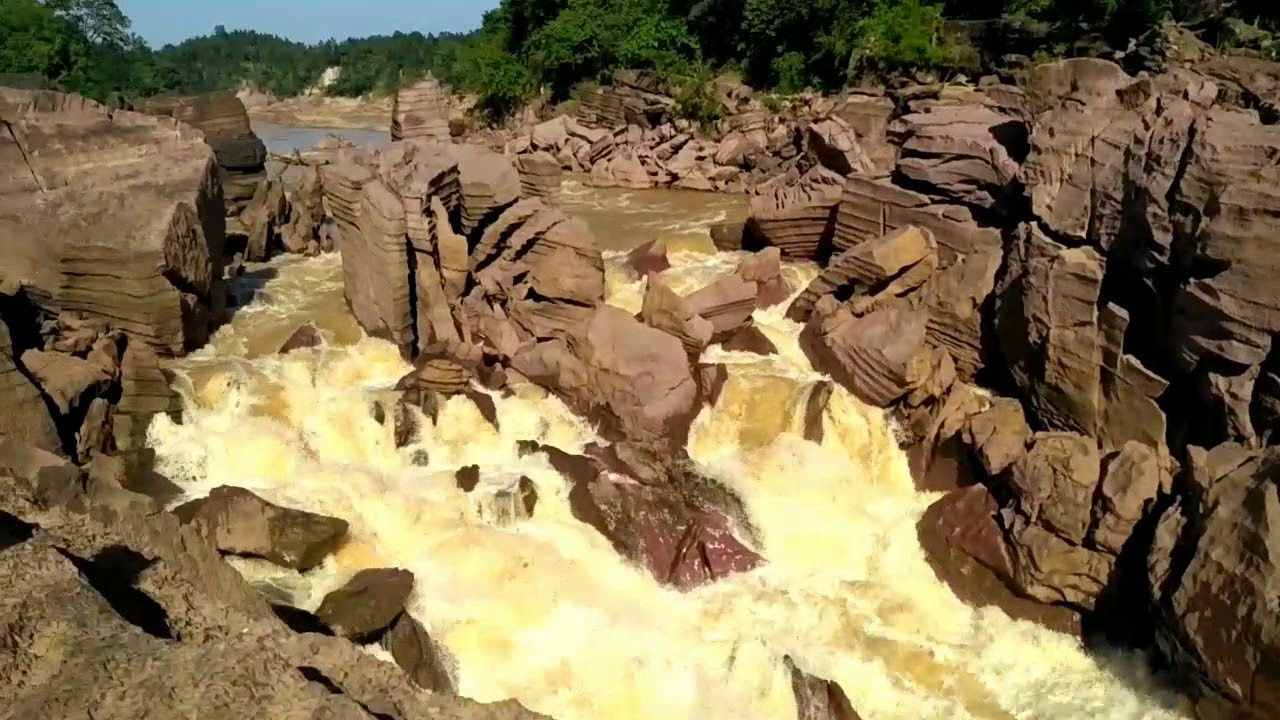 Gulmi
Gulmi
2.14 Kechela: Jain Temple and Copper Plate History
Kechela is known for its copper plate and Jain temple, which stands about 30 ft high and contains five images of Tirthankaras, including Resavanath, Mahavir Jain, and Ambika Devi. These well-crafted images indicate that Kechela was a significant Jain center in the medieval period.
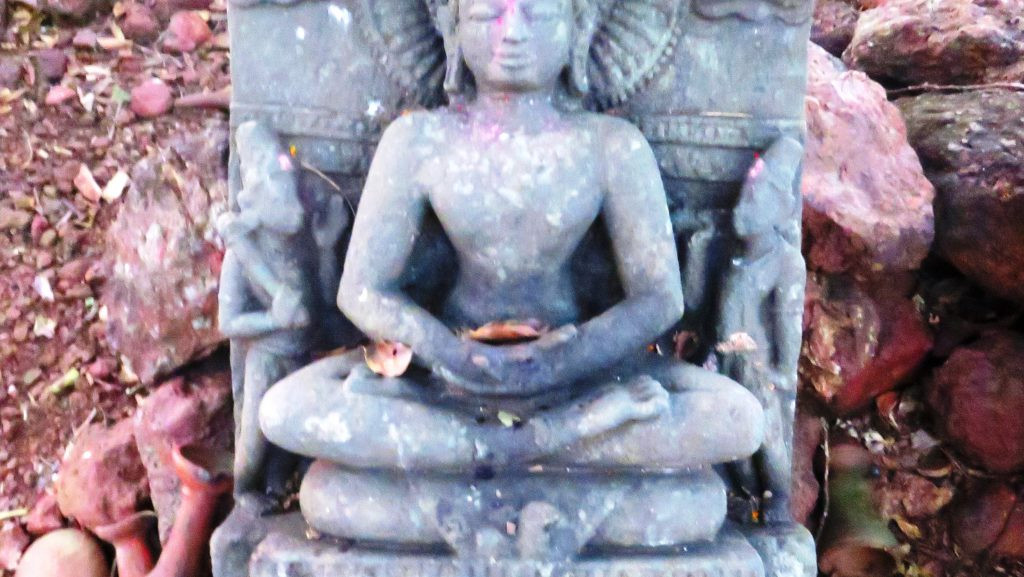 Kechela
Kechela
2.15 Machhakund (Duduma): Majestic Waterfall
Machhakund, also known as Duduma, is a waterfall that plunges from a height of 175 meters. Set in the heart of picturesque hills, Duduma is a rocky outlet for the Machhkund River. Rock-climbing enthusiasts can attempt to reach the base of the fall from the opposite side of the hill.
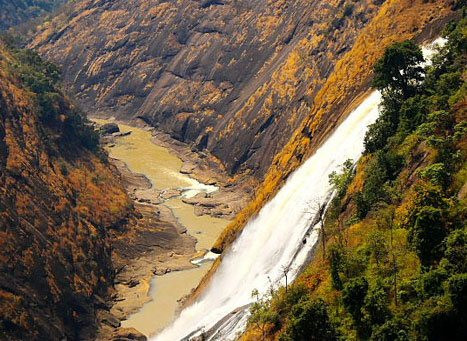 Duduma
Duduma
2.16 Deomali: Odisha’s Highest Peak
Deomali, the highest mountain peak in Odisha at 1762 meters, is nestled in the Eastern Ghats. It is an ideal location for aero gliding and trekking expeditions, offering breathtaking views and adventurous activities.
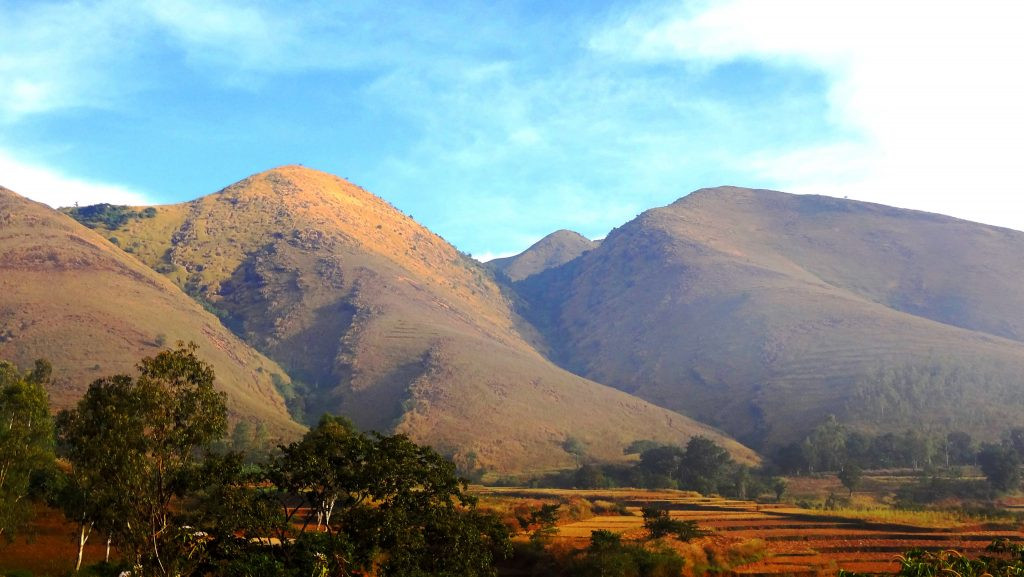 Deomali
Deomali
2.17 Gupteswar: Cave Temple of Lord Shiva
Gupteswar is a cave temple located on the banks of the Kolab River, about 80 km from Koraput. This important shrine of Lord Shiva is situated on a limestone hill and houses a sacred Swayambhu Shivling called Gupteswar, meaning “the Hidden God.”
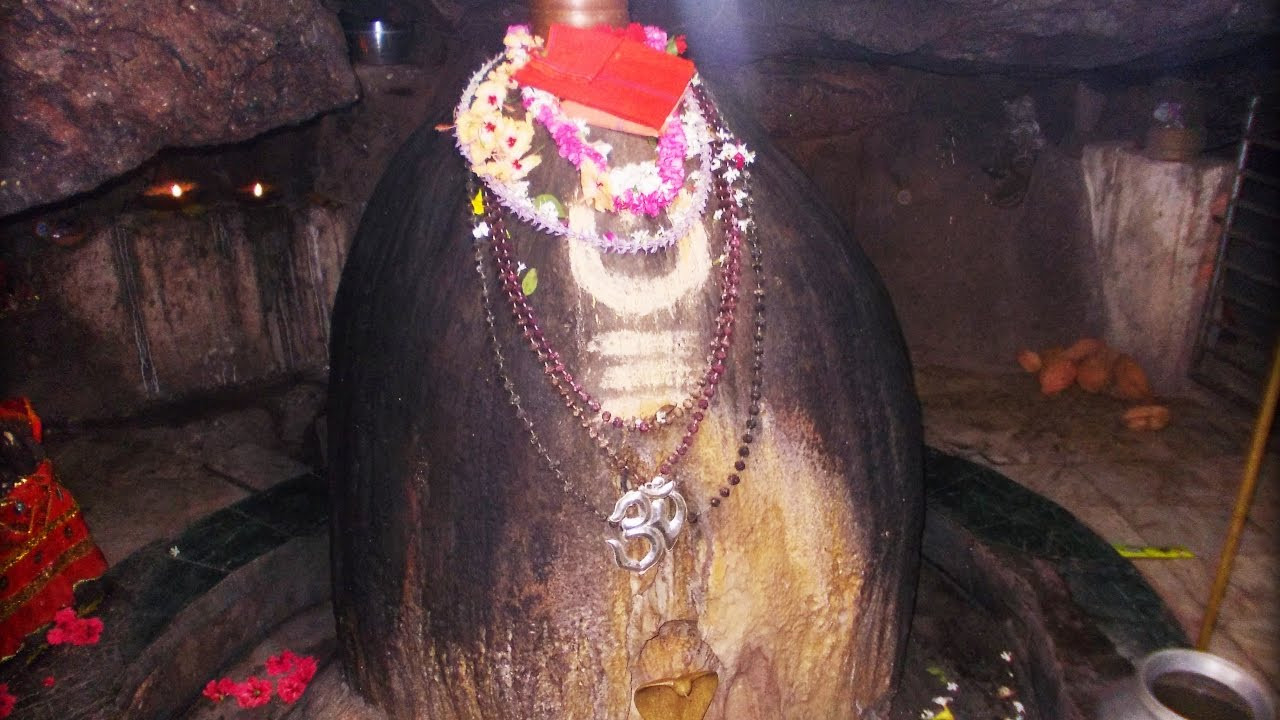 Gupteswar
Gupteswar
2.18 Sabar Shreekshetra: A Temple for All
Sabar Shreekshetra, meaning “the Sreekshetra of Sabar Peoples,” is a Jagannath Temple built at a height of 940 meters above sea level in Koraput town. It welcomes people of all religions, castes, and creeds.
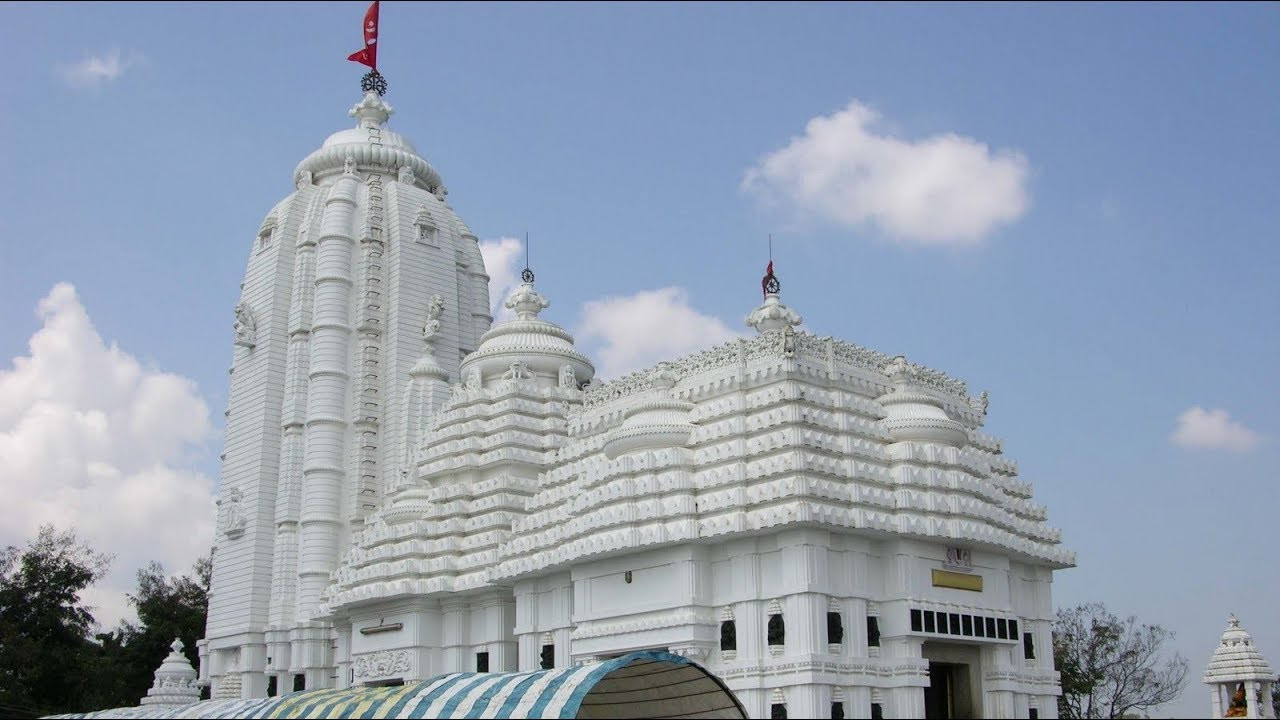 Sabar Sreekshetra
Sabar Sreekshetra
2.19 Raisil: Trekking and Celebrations
Raisil is ideal for trekking and surrounded by natural scenery. The “Anla Navami” festival is celebrated here every year with large and colorful gatherings, offering a vibrant cultural experience.
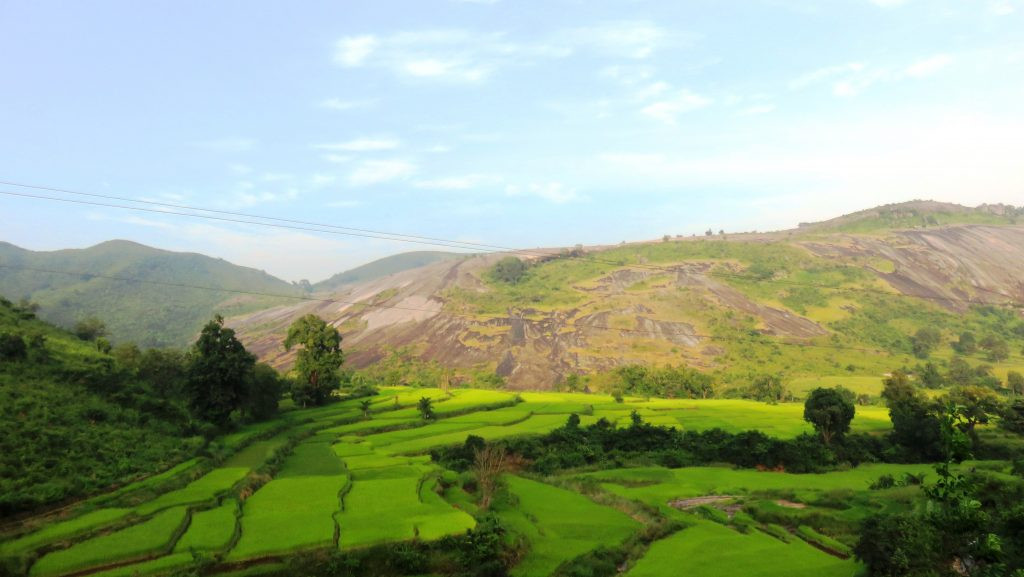 Raisil
Raisil
2.20 Maliguda: Highest Broad Gauge Railway Tunnel
Maliguda is a small village located 21 km east of Jeypore, featuring India’s highest broad gauge railway tunnel. This hilltop location is perfect for a weekend picnic.
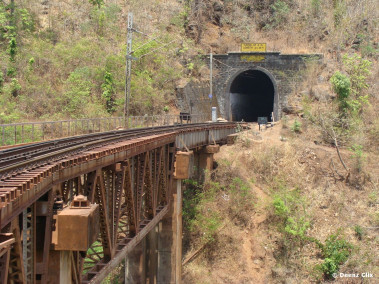 Maliguda
Maliguda
3. What Are the Best Ways to Reach Koraput?
Reaching Koraput requires some planning, as it is not directly connected to major cities by air or rail. However, there are viable options to get there:
3.1 By Air
Koraput does not have its own airport with regular flights. The nearest airport is Visakhapatnam Airport (VTZ), which is about 130 km away. From Visakhapatnam, you can hire a taxi or take a bus to Koraput.
3.2 By Rail
Koraput has a railway station, but it is not well-connected to major cities. The nearest major railway station is Jagdalpur (JDB), located approximately 82 km away. From Jagdalpur, you can take a bus or hire a taxi to reach Koraput.
3.3 By Road
Koraput is well-connected by road to other major cities in Odisha and neighboring states. Regular buses are available from cities like Visakhapatnam, Bhubaneswar, and Raipur. You can also hire a taxi or drive your own vehicle to Koraput.
4. What Is the Best Time to Visit Koraput for Tourism?
The best time to visit Koraput is between June and November. During this period, the weather is pleasant, with average temperatures around 26°C. The air is moderately humid, making it ideal for outdoor activities and sightseeing. This is also the peak tourist season, so expect more crowds at popular attractions.
5. What Is the Climate Like in Koraput?
Koraput has a tropical climate, classified as Aw according to the Köppen-Geiger climate classification. The average annual temperature is 23.1°C, and the average annual rainfall is 1604 mm. The summers (March to May) can be hot and humid, while the winters (December to February) are mild and pleasant.
6. What Are the Common Challenges Faced by Tourists in Koraput?
Tourists visiting Koraput may face several challenges:
- Remote Location: Koraput is located in a remote area with limited direct connectivity to major cities.
- Language Barrier: The primary language spoken in Koraput is Odia, which may pose a communication challenge for international tourists.
- Limited Accommodation Options: The availability of high-end hotels and resorts is limited, especially in remote areas.
- Infrastructure: While the main roads are generally in good condition, some interior roads may be bumpy and less maintained.
- Limited Information: Tourist information centers and resources may not be readily available or up-to-date.
7. How Can SIXT.VN Enhance Your Koraput Tourism Experience?
SIXT.VN can significantly enhance your Koraput tourism experience by providing convenient and reliable travel solutions. Here’s how:
- Airport Transfers: SIXT.VN offers airport transfer services from Visakhapatnam Airport to Koraput, ensuring a smooth and hassle-free journey.
- Car Rental: With SIXT.VN, you can rent a car to explore Koraput and its surrounding areas at your own pace, allowing you to visit remote attractions and enjoy the scenic beauty.
- Accommodation Assistance: SIXT.VN can assist you in finding and booking suitable accommodation options in Koraput, catering to your budget and preferences.
- Tour Packages: SIXT.VN offers customized tour packages that cover the major attractions in Koraput, providing you with a well-planned and enriching travel experience.
- Local Support: SIXT.VN provides local support and assistance, helping you navigate the region and overcome any challenges you may face.
8. What Types of Travelers Are Most Attracted to Koraput?
Koraput appeals to a diverse range of travelers, including:
- Nature Lovers: The lush green landscapes, waterfalls, and hills attract those seeking natural beauty and tranquility.
- Cultural Enthusiasts: The rich tribal culture and heritage appeal to those interested in learning about unique traditions and lifestyles.
- Adventure Seekers: The trekking and aero gliding opportunities in Deomali and other areas attract adventure enthusiasts.
- History Buffs: The historical sites and ancient temples attract those interested in exploring the region’s past.
- Budget Travelers: Koraput offers affordable accommodation and travel options, making it an attractive destination for budget travelers.
9. What Activities Can Tourists Enjoy in Koraput?
Koraput offers a wide range of activities that cater to different interests:
- Trekking: Explore the hills and forests of Deomali, Raja Cave, and Raisil.
- Sightseeing: Visit the Tribal Museum, Duduma Waterfall, and Gupteswar Cave Temple.
- Cultural Immersion: Attend the Parab festival and visit the weekly market in Onukadelli to experience tribal culture.
- Water Sports: Enjoy boating and picnics at Kolab Dam and Jalaput Reservoir.
- Pilgrimage: Visit the Sabar Shreekshetra Jagannath Temple and other religious sites.
10. What Are the Key Considerations for Planning a Trip to Koraput?
When planning a trip to Koraput, consider the following:
- Transportation: Plan your transportation in advance, as direct connectivity to major cities is limited.
- Accommodation: Book your accommodation in advance, especially during peak tourist season.
- Local Customs: Respect local customs and traditions, especially when visiting tribal areas.
- Language: Learn a few basic Odia phrases to communicate with locals.
- Health: Carry essential medications and consult your doctor before traveling.
- Safety: Be aware of your surroundings and take necessary safety precautions.
11. Is Koraput a Safe Destination for Tourists?
Yes, Koraput is generally a safe destination for tourists. However, it’s always wise to take certain precautions:
- Stay Informed: Keep yourself updated about local conditions and any advisories issued by authorities.
- Travel in Groups: If possible, travel in groups, especially when visiting remote areas.
- Avoid Night Travel: Try to avoid traveling at night, especially on less-traveled roads.
- Secure Your Belongings: Keep your valuables safe and be cautious in crowded areas.
- Respect Local Customs: Be respectful of local customs and traditions to avoid any misunderstandings.
12. What Are the Local Cuisine Specialties in Koraput?
Koraput offers a unique culinary experience with its local cuisine, which is heavily influenced by tribal traditions. Some must-try dishes include:
- Mandia Peja: A porridge made from finger millet (mandia), a staple food of the region.
- Bamboo Shoot Curry: A flavorful curry made with bamboo shoots, a delicacy in tribal cuisine.
- Red Ant Chutney: A unique chutney made from red ants, known for its medicinal properties.
- Mahua Ladoo: A sweet treat made from the flowers of the Mahua tree.
- Pitha: Traditional cakes made from rice flour and lentils.
13. How Can Tourists Respect Local Tribal Cultures in Koraput?
Respecting local tribal cultures is essential when visiting Koraput. Here are some ways to show your respect:
- Dress Modestly: Dress modestly, especially when visiting tribal villages and religious sites.
- Ask for Permission: Always ask for permission before taking photographs of people or their homes.
- Respect Traditions: Be respectful of local customs and traditions, even if you don’t understand them.
- Learn About Their Culture: Take the time to learn about the history, culture, and traditions of the local tribes.
- Support Local Businesses: Support local businesses and artisans by purchasing their products and services.
14. What Are Some Common Misconceptions About Koraput Tourism?
There are several misconceptions about Koraput tourism:
- It’s Unsafe: While it’s important to take precautions, Koraput is generally a safe destination for tourists.
- It’s Only for Adventure Seekers: Koraput offers a variety of attractions for different types of travelers, including nature lovers, cultural enthusiasts, and history buffs.
- It’s Difficult to Reach: While direct connectivity is limited, there are viable options to reach Koraput by air, rail, and road.
- There’s Nothing to Do: Koraput offers a wide range of activities and attractions, including trekking, sightseeing, cultural immersion, and water sports.
- It’s Only for Budget Travelers: While Koraput offers affordable options, there are also comfortable accommodation and travel choices available for those seeking a more luxurious experience.
15. What Are the Emerging Trends in Koraput Tourism?
Koraput tourism is evolving, with several emerging trends:
- Eco-Tourism: There’s a growing focus on eco-tourism, with initiatives to promote sustainable and responsible travel.
- Community-Based Tourism: Community-based tourism is gaining popularity, allowing tourists to experience local culture firsthand and support local communities.
- Adventure Tourism: There’s an increasing interest in adventure tourism activities like trekking, aero gliding, and rock climbing.
- Cultural Tourism: Cultural tourism is becoming more popular, with tourists seeking to learn about the unique tribal culture and heritage of the region.
- Wellness Tourism: Wellness tourism is emerging, with visitors seeking relaxation and rejuvenation in the natural surroundings of Koraput.
16. What Are the Key Events and Festivals Celebrated in Koraput?
Koraput is known for its vibrant festivals and events, including:
- Parab: An annual tribal festival organized by the District Council of Culture, featuring sports, cultural events, and exhibitions.
- Ram Navami: A major festival celebrated at the Sri Ram Temple in Dumuriput, attracting numerous devotees.
- Anla Navami: A festival celebrated in Raisil with large and colorful gatherings.
- Chaitra Parva: A tribal festival celebrated in March-April, marking the beginning of the new year.
- Maha Shivaratri: A major festival celebrated at the Gupteswar Cave Temple, dedicated to Lord Shiva.
17. How Does Koraput Tourism Contribute to the Local Economy?
Koraput tourism plays a vital role in the local economy by:
- Generating Employment: Tourism creates employment opportunities for local people in sectors like hospitality, transportation, and tourism services.
- Supporting Local Businesses: Tourism supports local businesses, including hotels, restaurants, shops, and tour operators.
- Promoting Local Products: Tourism promotes the sale of local products and handicrafts, providing income for local artisans and producers.
- Developing Infrastructure: Tourism leads to the development of infrastructure, including roads, hotels, and other facilities.
- Preserving Culture: Tourism helps preserve local culture and traditions by showcasing them to visitors and encouraging their continuation.
18. What Role Does the Government Play in Promoting Koraput Tourism?
The government plays a significant role in promoting Koraput tourism by:
- Developing Infrastructure: Investing in infrastructure development, including roads, airports, and railway lines.
- Promoting Tourism: Conducting promotional campaigns to attract tourists to the region.
- Providing Incentives: Offering incentives to attract private investment in the tourism sector.
- Ensuring Safety and Security: Ensuring the safety and security of tourists by maintaining law and order.
- Preserving Culture: Protecting and preserving local culture and heritage through various initiatives.
19. How Can Tourists Contribute to Sustainable Tourism in Koraput?
Tourists can contribute to sustainable tourism in Koraput by:
- Supporting Local Businesses: Patronizing local businesses and buying local products.
- Respecting Local Culture: Respecting local customs and traditions.
- Conserving Resources: Conserving resources like water and energy.
- Reducing Waste: Reducing waste by using reusable containers and avoiding single-use plastics.
- Traveling Responsibly: Traveling responsibly by minimizing your environmental impact and supporting local communities.
20. What Are Some Final Tips for Planning a Memorable Trip to Koraput?
Here are some final tips for planning a memorable trip to Koraput:
- Plan Ahead: Plan your trip in advance, especially during peak tourist season.
- Book Accommodation: Book your accommodation in advance to ensure availability.
- Pack Appropriately: Pack appropriate clothing and footwear for trekking and outdoor activities.
- Learn Basic Odia Phrases: Learn a few basic Odia phrases to communicate with locals.
- Respect Local Culture: Respect local customs and traditions.
- Stay Safe: Take necessary safety precautions and be aware of your surroundings.
- Be Flexible: Be flexible and open to new experiences.
- Enjoy Your Trip: Relax, enjoy the natural beauty, and immerse yourself in the rich tribal culture of Koraput.
21. Frequently Asked Questions (FAQs) About Koraput Tourism
21.1. Is Koraput worth visiting?
Yes, Koraput is definitely worth visiting for its unique blend of natural beauty, rich tribal culture, and historical sites.
21.2. What is the best time to visit Koraput?
The best time to visit Koraput is between June and November when the weather is pleasant and ideal for outdoor activities.
21.3. How can I reach Koraput?
You can reach Koraput by air (via Visakhapatnam Airport), by rail (via Jagdalpur Railway Station), or by road.
21.4. Are there good accommodation options in Koraput?
Yes, there are several accommodation options available in Koraput, ranging from budget hotels to guesthouses. SIXT.VN can assist you in finding suitable accommodation options.
21.5. Is Koraput safe for tourists?
Yes, Koraput is generally safe for tourists, but it’s always wise to take necessary precautions.
21.6. What are some must-try dishes in Koraput?
Some must-try dishes in Koraput include Mandia Peja, Bamboo Shoot Curry, and Red Ant Chutney.
21.7. How can I respect local tribal cultures in Koraput?
You can respect local tribal cultures by dressing modestly, asking for permission before taking photos, and being respectful of their traditions.
21.8. What activities can I enjoy in Koraput?
You can enjoy activities like trekking, sightseeing, cultural immersion, and water sports in Koraput.
21.9. Can SIXT.VN help me plan my trip to Koraput?
Yes, SIXT.VN offers airport transfers, car rentals, accommodation assistance, and customized tour packages to enhance your Koraput tourism experience.
21.10. How can I contribute to sustainable tourism in Koraput?
You can contribute to sustainable tourism by supporting local businesses, conserving resources, and traveling responsibly.
Ready to explore the untouched beauty of Koraput? Let SIXT.VN be your trusted travel partner, providing seamless and convenient services to make your journey unforgettable. Discover the magic of Koraput with ease and confidence!
Address: 260 Cau Giay, Hanoi, Vietnam.
Hotline/Whatsapp: +84 986 244 358.
Website: SIXT.VN.



